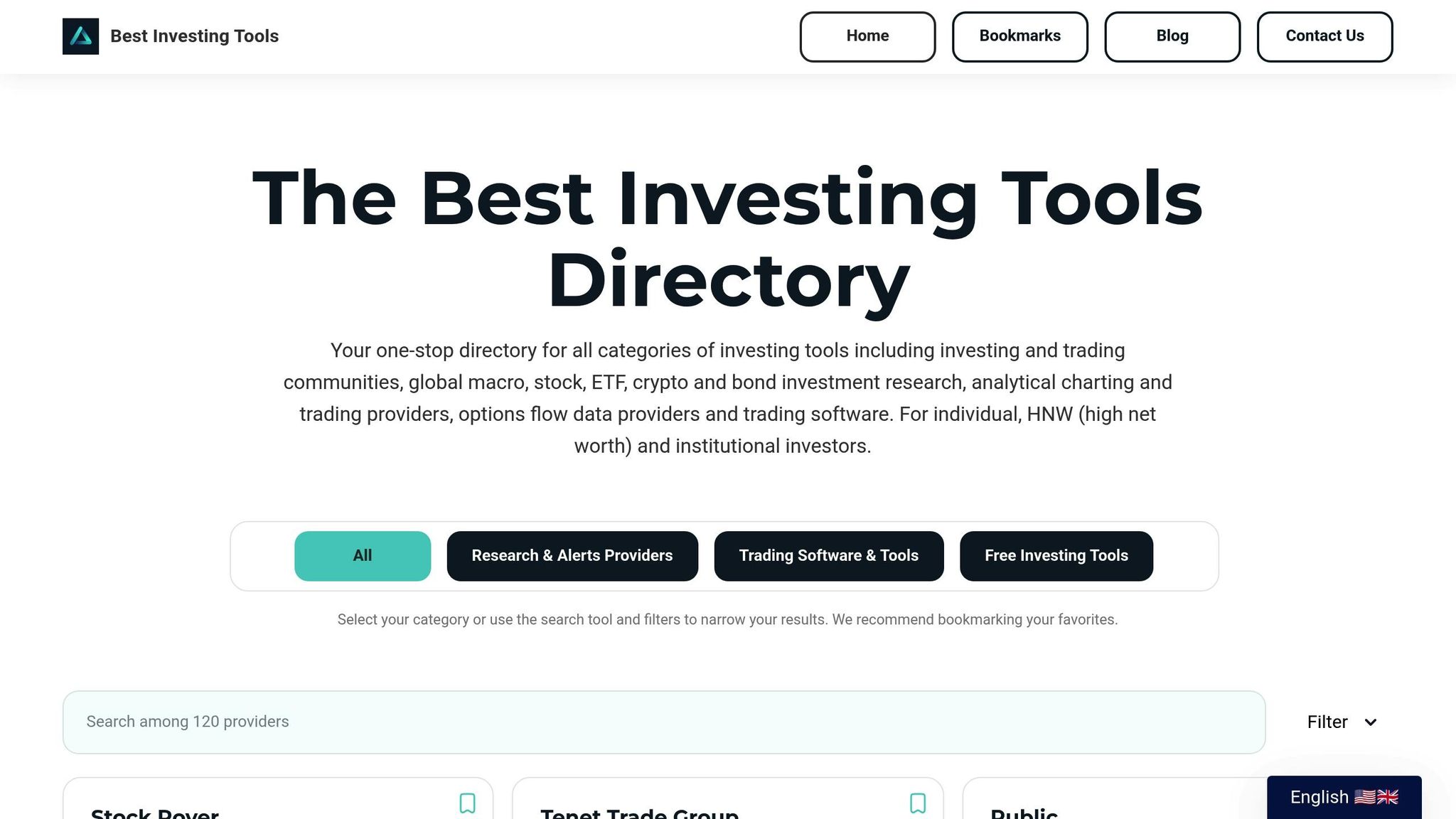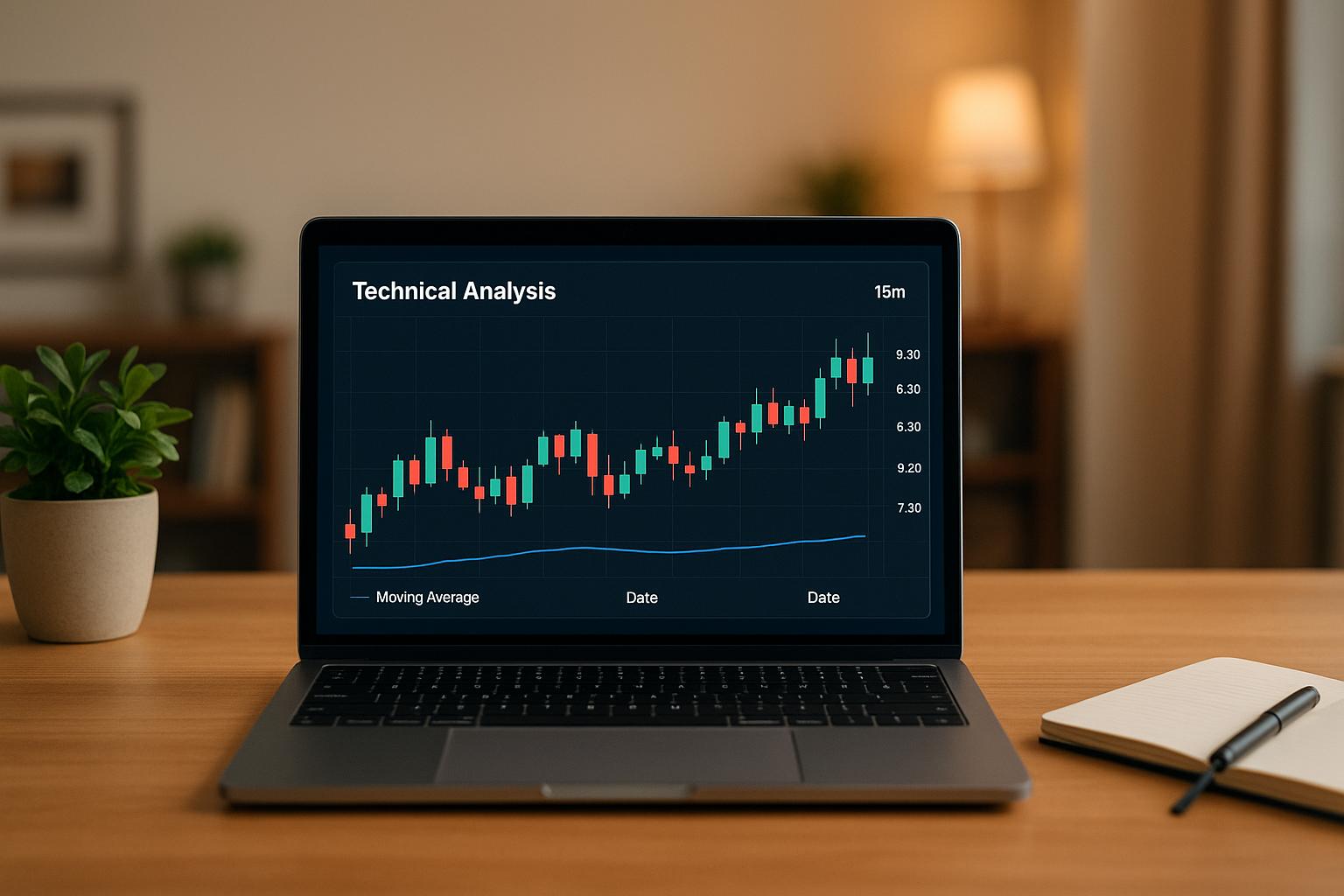Fund flow tools help investors and policymakers monitor the movement of money across borders, offering insights into global investment trends. These tools analyze data from sources like the IMF, BIS, and EPFR to track capital flows in real-time and historically. They use advanced models, visualization techniques, and macroeconomic indicators to identify patterns, predict market shifts, and assess risks. While they provide valuable insights for decision-making, challenges like data lag and categorization inconsistencies remain. Choosing the right tool involves considering data coverage, integration, and cost.
Key Takeaways:
- Purpose: Monitor cross-border capital flows for better investment decisions.
- Data Sources: IMF, BIS, IIF, EPFR.
- Features: Real-time updates, historical analysis, heatmaps, Sankey charts, and network graphs.
- Challenges: Data delays, noise in short-term trends, and subjective categorization.
- Selection Criteria: Data accuracy, integration capabilities, filtering options, and cost.
Fund flow tools are essential for understanding global capital movements and managing investment risks effectively.
Main Features of Fund Flow Visualization Tools
Data Collection and Processing
Fund flow visualization tools gather data from various sources, using automated data feeds and APIs to pull information from financial institutions, investment funds, and regulatory bodies. For instance, platforms often rely on systems like the U.S. Treasury International Capital (TIC) for direct feeds, while private providers such as EPFR supply extensive data on mutual and exchange-traded fund flows.
To ensure accuracy, these tools reconcile data by cross-referencing multiple sources and eliminating inconsistencies with advanced algorithms. They also account for valuation changes - like rising equity prices paired with foreign currency depreciation - so market-driven fluctuations are separated from actual capital movements.
Continuous data validation is a key feature, maintaining high-quality standards. Figures are standardized, typically converted to U.S. dollars for American users, and reporting periods are aligned across jurisdictions. Statistical models fill in gaps for missing or delayed data, creating refined data streams that enable clear and precise visualizations.
Visualization Methods for Fund Flows
Modern tools use a variety of visualization techniques to simplify complex datasets into actionable insights. Heatmaps, for example, offer a quick snapshot of flow intensity by region or asset class, with color coding to indicate the scale of capital movement.
Sankey charts are widely used to illustrate the direction and volume of capital flows between countries or asset classes. These flow diagrams show how money travels, with the width of each line representing the volume of funds. Filtering options help manage the complexity of large datasets.
Interactive charts and network graphs take visualization a step further. Network graphs are especially effective for exploring large datasets, highlighting relationships between market participants and revealing patterns like capital concentration. Users can drill down into specific regions, sectors, or time periods, tailoring the analysis to their needs. These tools also allow users to toggle between detailed transaction data, aggregated flows by region, or summaries at the entity level, uncovering hidden trends. Dynamic tracking capabilities further enhance these insights, making them even more actionable.
Real-Time and Historical Data Tracking
Fund flow tools excel at tracking both real-time and historical data. Real-time updates allow users to monitor market conditions as they unfold and respond swiftly to emerging trends. Many platforms refresh data multiple times daily, with some offering near-instant updates for significant market events.
A good example is the IIF Capital Flows Tracker, which provides monthly updates on portfolio and net capital flows. This dual functionality supports real-time monitoring while also offering historical analysis for global and emerging markets. By combining these capabilities, investors can identify sudden shifts in capital allocation while also studying long-term patterns.
Historical data, often spanning decades, is another key feature. This depth lets users analyze trends, test strategies, and identify recurring behaviors in capital flows. Such context is essential for comparing current conditions to past market cycles, such as those during major financial crises.
Additionally, these tools integrate macroeconomic indicators and track regulatory events, offering valuable context. For instance, if a tool detects significant outflows from a market, users can quickly determine whether they coincide with policy changes, economic reports, or regulatory announcements. This helps distinguish between temporary reactions and deeper shifts in investor sentiment.
Finally, the growing use of API-driven platforms allows institutional users to seamlessly incorporate fund flow data into their own systems. This real-time integration streamlines cross-border capital tracking and enhances automated trading and risk management strategies.
Methods Used in Fund Flow Tools
Mathematical Models for Flow Analysis
Fund flow tools heavily depend on mathematical models to study patterns and forecast future capital movements. Models like Vector Autoregression (VAR) examine how stock index returns interact across different countries, while the BEKK-GARCH model focuses on time-varying volatility and dynamic correlations among multiple variables. When these models are combined into a VAR-BEKK-GARCH framework, the results often align more closely with observed data. This is evident in lower AIC/BIC values and improved forecasting accuracy compared to alternatives like DCC-GARCH, E-GARCH, or CCC-GARCH. For instance, a recent study highlighted increased volatility in emerging markets such as India, Brazil, China, and Mexico during the post-pandemic period.
Adding Macroeconomic Indicators
To provide a broader perspective, fund flow tools incorporate macroeconomic indicators alongside quantitative models. These tools improve their precision by integrating critical economic metrics. Macroeconomic indicators are divided into leading indicators (e.g., stock market trends, housing prices, bond yields) and lagging indicators (e.g., GDP growth, consumer price index, currency stability). The sensitivity to these indicators often varies by region. For example, developed economies tend to react more strongly to GDP growth and exchange rate fluctuations due to their dependence on global trade. Additionally, macroeconomic advisors play a key role in interpreting these data points, helping investors strengthen risk management strategies and build more resilient portfolios.
Analyzing Regulatory and Market Events
In addition to mathematical models and economic metrics, fund flow tools also factor in regulatory and market events to refine their predictions. These tools monitor shifts in policies, regulatory announcements, and significant market events to evaluate their effects on cross-border capital movements. By linking unusual capital flows to recent regulatory changes or market disruptions, they help identify whether movements are temporary reactions or reflect deeper structural changes in investor sentiment. As economic conditions are constantly shaped by geopolitical events, monetary policies, and global market dynamics, combining event-driven analysis with mathematical modeling offers a more rounded approach. This integrated method equips institutional investors and fund managers with the insights needed to make well-informed decisions about cross-border investments.
Benefits and Challenges of Fund Flow Tools
Advantages of Fund Flow Analysis
Fund flow tools bring clarity to global investment patterns, helping investors spot risks and uncover opportunities. They offer a clearer view of how capital moves across borders, allowing portfolio managers to identify trends before they become mainstream. While these tools rely on historical data, frequent updates provide a way to detect emerging patterns.
One of the standout benefits is risk detection. By examining past flow patterns alongside current movements, investors can gauge market sentiment and potential volatility. This is especially useful during uncertain economic times when capital outflows from emerging markets might signal larger financial issues.
| Advantage | Description | Impact on Investment Decisions |
|---|---|---|
| Market Transparency | Real-time insights into cross-border capital flows | Enables quicker reactions to market changes |
| Risk Assessment | Early warnings for market volatility | Strengthens portfolio risk management and hedging strategies |
| Opportunity Discovery | Highlights markets with significant capital inflows | Guides strategic asset allocation and market timing |
| Sentiment Analysis | Tracks investor behavior through flow patterns | Helps anticipate shifts in market sentiment and direction |
Another benefit is identifying overcrowded or underinvested markets, which can guide diversification strategies. However, despite these advantages, fund flow tools are not without their challenges.
Challenges and Limitations
While helpful, fund flow tools come with notable drawbacks. One key issue is data lag - by the time the data is processed and analyzed, market conditions may have already changed. This delay can reduce the relevance of the insights.
The accuracy of these tools also depends on the quality of the data and the assumptions behind the analysis. Predictions are never foolproof, as short-term randomness in fund flows can obscure meaningful trends. This makes it challenging to distinguish between noise and actionable insights.
Another challenge lies in categorization subjectivity. Analysts may interpret the same capital movement differently, leading to inconsistencies in how activities are classified into operating, investing, or financing categories. Additionally, these tools often focus exclusively on cash movements, overlooking non-cash expenses and changes in the market value of assets and liabilities. This can result in an incomplete understanding of an organization’s financial health.
Rebalancing activities by fund managers can also distort the data. These routine adjustments may appear as shifts in investor sentiment when, in reality, they are simply mechanical portfolio changes.
Impact on Financial Stability and Decision-Making
Despite their limitations, fund flow tools play an important role in maintaining financial stability and guiding investment decisions. By providing early warnings of unusual capital outflows, these tools help investors adjust their positions before broader market shifts occur. For example, significant outflows from a specific region or asset class can signal the need for portfolio realignment.
When combined with other market indicators, fund flow analysis becomes even more powerful. Pairing this data with fundamental analysis and macroeconomic insights allows investors to differentiate between short-term market reactions and long-term structural changes. This approach proved invaluable during periods of crisis. For instance, in the second half of 2005, hedge fund investors withdrew funds for the first time in nine years due to disappointing returns in May and October. This event highlighted how shifts in market sentiment can cascade into broader capital allocation changes.
To get the most out of fund flow tools, investors should integrate them with real-time market data and remain mindful of external factors. Ensuring accurate and consistent categorization of activities is also essential for reliable analysis.
sbb-itb-2e26d5a
Choosing the Right Fund Flow Tool
Key Criteria for Tool Selection
Picking the right fund flow tool involves weighing several critical factors that can directly influence your investment analysis. One of the top priorities is data coverage and accuracy. Make sure the tool provides extensive global market data so you can fully understand cross-border capital flows.
Another important aspect is the data source methodology. Different providers rely on varying approaches to gather and process data, so it’s essential to choose one that aligns with your specific analytical needs.
Filtering capabilities are also vital. Advanced filtering options can significantly improve your ability to pinpoint particular market segments or investor behaviors, saving time and boosting efficiency.
When it comes to integration capabilities, think about how the tool will work with your current systems. A seamless connection to your enterprise platforms is crucial to avoid isolated data sets and workflow disruptions. Poor integration can lead to inefficiencies that diminish the tool’s overall value.
Cost is another factor to consider, but don’t just focus on the upfront licensing fees. Take into account implementation, maintenance, and training expenses as well. Your choice should balance your budget with the technical expertise available in your team.
Modern platforms also need to keep pace with today’s fast-changing financial landscape. Real-time monitoring capabilities are increasingly essential, especially as fintech innovations continue to reshape global finance. Tools with real-time features allow you to track market conditions instantly, helping with dynamic hedging and risk management. This is crucial for adapting to rapid market changes.
Using the Best Investing Tools Directory

The Best Investing Tools Directory is a valuable resource for comparing fund flow tools alongside other investment analysis platforms. It provides in-depth reviews of various services, including investment research tools, charting software, and technical analysis platforms. This helps you see how fund flow tools fit within your overall investment strategy.
Leverage user reviews and ratings in the directory to gauge whether a tool lives up to its promises. Customer testimonials can give you insight into real-world performance, helping you avoid tools that fall short. The directory also offers detailed filtering options, enabling you to find tools tailored to your investment scale and goals - whether you're an individual investor or managing institutional portfolios.
What sets the directory apart is its broad perspective. It doesn’t just evaluate fund flow tools in isolation but considers how they integrate with other investment platforms. This comprehensive approach is especially useful for building a well-rounded investment analysis workflow.
The directory also distinguishes between tools designed for individual investors and those aimed at institutional users. Whether you’re tracking sentiment shifts to adjust a portfolio or conducting macroeconomic analysis for a large client, the categorization helps you find a tool that fits your specific needs.
Before committing to a tool, take the time to compare multiple options listed in the directory. If available, try out free trials to get a hands-on feel for their features. Detailed comparisons of functionality - like historical data depth, visualization tools, and export formats - can help you identify the platform that best meets your requirements.
Conclusion: The Value of Fund Flow Tools for Investors
Fund flow tools have become essential for investors trying to make sense of today’s complex and interconnected global markets. These platforms provide critical insights into how capital moves across borders, enabling both individual and institutional investors to make smarter portfolio decisions. This level of understanding builds on the detailed analysis covered in earlier sections.
The scope of data available through modern fund flow tools is staggering. Take EPFR, for instance - it tracks over 18,000 equity funds and 9,000 debt funds, covering an impressive 96% of global assets. This extensive reach offers a solid foundation for analyzing market behavior and trends.
One standout feature of these tools is their real-time monitoring capability. During volatile times like the COVID-19 pandemic, investors who kept an eye on fund flows were able to detect early shifts, such as significant outflows from emerging markets and inflows into U.S. Treasuries. This ability to respond quickly to market changes complements the historical trend analysis discussed earlier.
Another strength lies in how these tools combine fund flow data with macroeconomic indicators. By integrating metrics like GDP growth, interest rates, and regulatory changes, investors can gain a deeper understanding of not just what is happening but why. This context is invaluable for crafting strategies that adapt to shifting market conditions.
Of course, no tool is without its limitations. Challenges like occasional data lags or regional coverage gaps remain. However, the benefits - greater transparency and the ability to anticipate market vulnerabilities - far outweigh these drawbacks. These tools also play a role in promoting financial stability by helping regulators identify risks before they escalate into larger problems.
For those serious about refining their global investment strategies, fund flow tools offer a data-driven approach that was unavailable just a few years ago. Whether it’s tracking sentiment shifts to fine-tune a portfolio or conducting broader macroeconomic analysis for institutional clients, these platforms provide the insights needed to navigate market trends and manage cross-border risks effectively.
If you’re looking to explore your options, the Best Investing Tools Directory is a great place to start. Finding the right tool can help you turn the complex movements of global capital into actionable, strategic decisions.
FAQs
How do fund flow tools help investors track cross-border capital and make smarter decisions?
Fund flow tools give investors a clearer picture of how money is moving through global markets. They track capital inflows and outflows, shed light on market sentiment, and pinpoint developing trends. By studying these movements, investors can gauge the health of specific markets and anticipate possible changes in the global economy.
This kind of insight plays a key role in strategic asset allocation and risk management, helping investors decide where to place their funds. Whether you're keeping an eye on cross-border investments or assessing market stability, fund flow tools are a crucial part of crafting a smarter investment approach.
What challenges do fund flow tools face when tracking cross-border capital?
Fund flow tools encounter a number of hurdles when it comes to tracking cross-border capital. Data privacy laws and localization requirements often restrict the sharing and analysis of information between countries, creating gaps in understanding global capital movements. On top of that, the complexity of international financial regulations and the ever-evolving nature of global markets add layers of difficulty to monitoring and interpreting these flows.
These challenges can lead to incomplete or delayed data, which limits the ability of these tools to deliver accurate, real-time insights. Even so, fund flow tools continue to play a critical role in spotting trends and uncovering opportunities within global capital markets.
What should investors look for when choosing a fund flow tool?
When choosing a fund flow tool, it's essential to prioritize features that match your investment needs. Look for tools that offer precise tracking of cross-border capital flows, real-time data updates, and strong analytical tools to help you understand market trends and patterns.
Additionally, ensure the tool supports the specific fund types relevant to your strategy, whether that's mutual funds, ETFs, or others. The right fund flow tool should deliver dependable insights tailored to your cross-border investment goals, empowering you to make informed and confident decisions.



